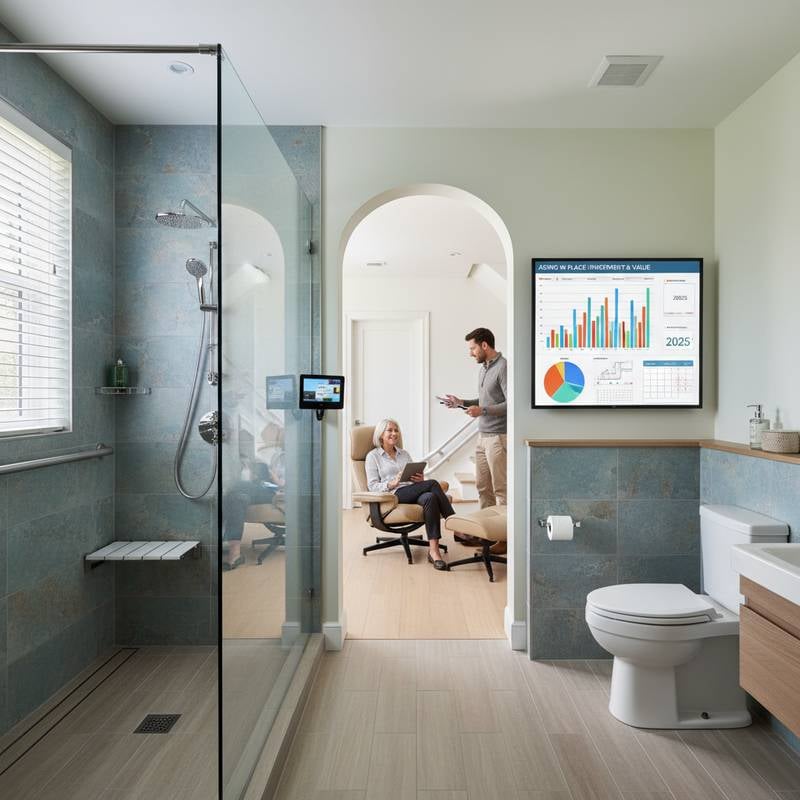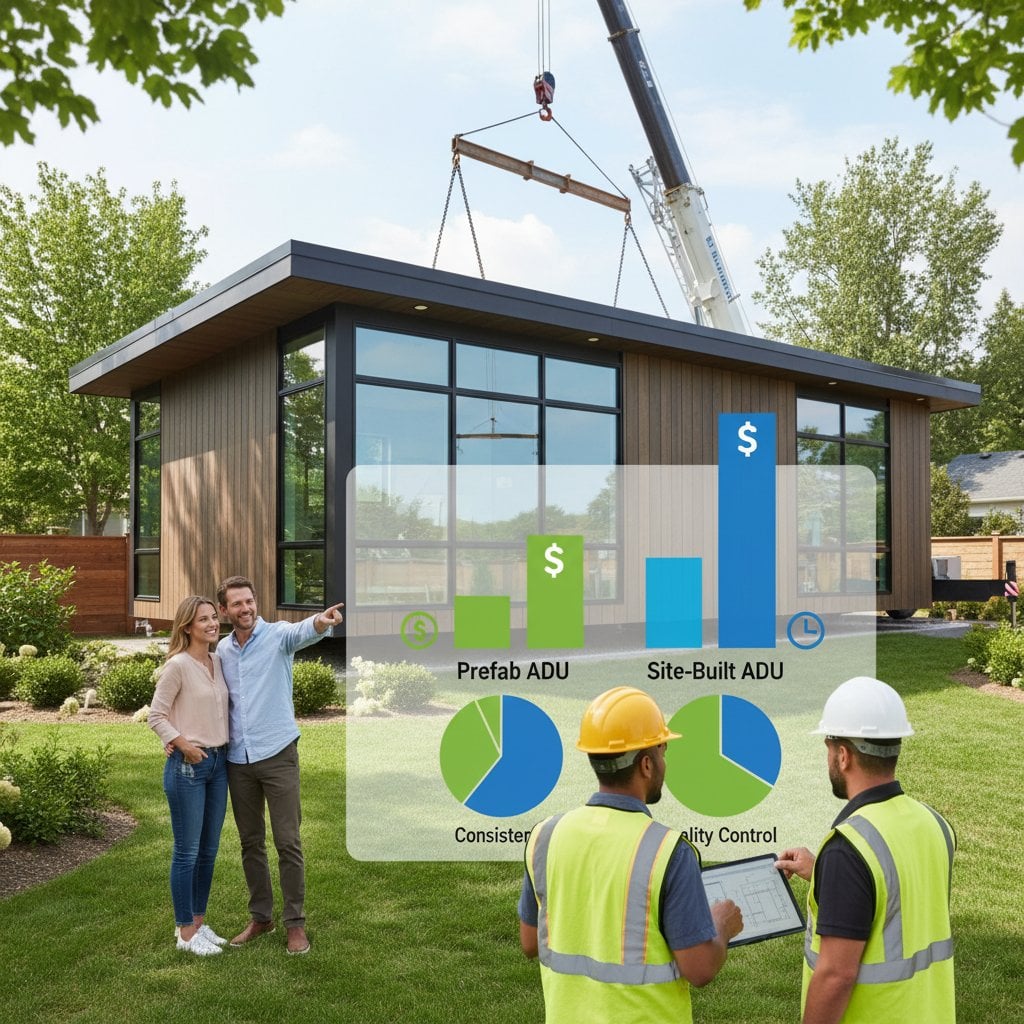Top Smart Home Trends for Custom Homes in Fall 2025
Smart home technology has transitioned from optional luxury to standard expectation in custom home construction. Homeowners demand cohesive systems that enhance comfort, security, and operational efficiency while integrating smoothly into routines. For this season, emerging trends influence the design, construction, and use of intelligent residences.
This resource outlines key smart home enhancements to consider, with details on cost estimates, design factors, and scenarios requiring expert involvement.
Essential Smart Home Trends
- Comprehensive whole-home automation platforms
- Advanced lighting controls
- Energy tracking and optimization tools
- Sophisticated security and entry management
- Intelligent kitchen and bathroom features
- Next-generation climate regulation
- Wellness and health monitoring integrations
Comprehensive Whole-Home Automation Platforms
Core Benefits: A unified control center links lighting, temperature settings, security protocols, and media devices into a single interface. Such integration streamlines management and eliminates reliance on numerous applications or controllers.
Investment and Returns: Budget $5,000 to $25,000 based on scale and capabilities. Properties equipped with seamless automation attract greater buyer interest, often commanding premiums of up to 5 percent due to perceived modernity and convenience.
Installation Options: Basic plug-in solutions suit independent setups, yet professional deployment guarantees durability and device interoperability.
Implementation Advice: Opt for open-protocol systems compatible with diverse manufacturers to maintain flexibility and avoid vendor lock-in.
Advanced Lighting Controls
Core Benefits: Illumination influences ambiance, power consumption, and exterior aesthetics. Contemporary options feature adjustable LED bulbs that modulate intensity and hue to align with circadian rhythms, promoting better rest patterns.
Investment and Returns: Individual smart bulbs cost approximately $20 each, whereas comprehensive wired installations range from $2,000 to $8,000. Automation in lighting typically reduces electricity expenses by 10 to 20 percent through scheduled and sensor-based operation.
Installation Options: Replacing bulbs or adding smart switches requires minimal expertise for most individuals. Systems integrated with home wiring demand attention from certified electricians to ensure safety and compliance.
Implementation Advice: Incorporate motion detectors in high-traffic areas such as corridors and restrooms to optimize usage and further conserve energy.
Energy Tracking and Optimization Tools
Core Benefits: Rising utility rates prompt demand for visibility into consumption patterns. Intelligent panels and sensors deliver instant data analytics and recommend behavioral or systemic adjustments for reduced waste.
Investment and Returns: Upgrading to a smart electrical panel involves $3,000 to $5,000. Depending on household size and usage, annual savings may total $300 or more through targeted efficiencies.
Installation Options: Outlet-based monitors offer straightforward self-installation. Complete panel overhauls necessitate certified electricians and frequently involve regulatory approvals.
Implementation Advice: Combine energy trackers with programmable thermostats, energy-star-rated appliances, and pre-wired solar infrastructure to maximize ongoing financial benefits.
Sophisticated Security and Entry Management
Core Benefits: Modern security extends beyond basic surveillance to include anticipatory alerts. Capabilities encompass facial identification, delivery notifications, and access via biometrics on doors.
Investment and Returns: Entry-level configurations with cameras and detectors begin at $500. High-end arrangements incorporating intelligent locks, automated gates, and centralized oversight exceed $5,000. These enhancements foster security assurance and can lower homeowner insurance rates by demonstrating proactive measures.
Installation Options: Battery-operated cameras and intercoms install with ease. Fixed installations for locks, barriers, and expansive networks require specialist expertise.
Implementation Advice: Prioritize platforms with robust data protection, regular updates, and on-device storage to minimize vulnerabilities associated with remote servers.
Intelligent Kitchen and Bathroom Features
Core Benefits: As primary activity zones, kitchens and bathrooms benefit from technologies that merge usability with resource conservation. Kitchens incorporate ovens with remote preheating, refrigerators tracking stock levels, and touchless faucets activated by voice commands. Bathrooms offer warmed flooring, flow-regulating fixtures, and interactive mirrors displaying information.
Investment and Returns: Individual smart appliances price from $1,500 to $8,000 per unit. Bathroom innovations, such as automated lavatories or digital shower controls, span $1,000 to $6,000. Such additions elevate routine experiences and appeal to prospective purchasers seeking contemporary functionality.
Installation Options: Standalone appliances connect without complication. Modifications to plumbing or circuits call for qualified tradespeople.
Implementation Advice: Target features that conserve water and electricity, ensuring luxury aligns with environmental responsibility.
Next-Generation Climate Regulation
Core Benefits: Optimal indoor environments hinge on precise temperature management. Current systems provide zoned adjustments, forecast-based operation, and assessments of air purity.
Investment and Returns: Basic smart thermostats cost $200 or less. Integrating with full heating, ventilation, and air conditioning setups, including zoning, ranges from $5,000 to $15,000. Expect yearly energy reductions of 10 to 15 percent via intelligent adjustments.
Installation Options: Exchanging standard thermostats proves accessible for many. Advanced zoning or airflow enhancements demand engineered solutions from heating specialists.
Implementation Advice: In regions with harsh winters, integrate radiant underfloor heating under automated oversight. For temperate zones, pair smart ceiling fans with timed sequences to enhance circulation.
Wellness and Health Monitoring Integrations
Core Benefits: Intelligent residences now support physical well-being through elements like rhythm-synchronized lighting, filtration for cleaner air, testing for water purity, and acoustic dampening. These elements contribute to immediate ease and sustained vitality.
Investment and Returns: Entry-level wellness setups begin at $2,000, escalating to $20,000 for thorough air and water treatment networks. Quantifying returns proves challenging, though market preference for health-oriented properties surges.
Installation Options: Compact air cleaners and sensors install independently. Extensive ventilation, purification, or hydration systems require expert configuration.
Implementation Advice: For those with respiratory sensitivities, emphasize filtration units and humidity regulators to maintain optimal conditions.
Strategies for Cost Efficiency
- Integrate multiple systems during initial builds to minimize installation expenses.
- Choose expandable ecosystems allowing phased additions over time.
- Apply available incentives and deductions for qualifying efficient technologies.
- Solicit bids from several specialists prior to final selections.
Scenarios Requiring Expert Assistance
Engage certified professionals for tasks involving:
- Alterations to electrical infrastructure.
- Interventions in plumbing lines.
- Adherence to local regulations or permitting processes.
- Intricate merging of security components.
Select providers holding relevant credentials for your chosen technologies. Request client testimonials, liability coverage verification, and comprehensive service guarantees.
Frequently Addressed Inquiries
Do smart homes function independently of internet connectivity?
Certain operations, such as preset lighting routines, operate locally. However, premium capabilities generally depend on online connections for full performance.
How do smart enhancements affect property appraisals?
Integrated features, particularly in efficiency and protection, frequently justify higher offers from informed buyers.
What constitutes the optimal smart home ecosystem?
Selections vary by financial constraints, interoperability needs, and prioritized functions. Favor versatile platforms accommodating various devices.
How secure are connected devices?
Implementing secure credentials, timely software patches, and protected communication protocols substantially mitigates threats.
Realizing Benefits in an Intelligent Residence
Advancements in smart technology propel residences toward greater efficiency, protection, and livability. Selecting appropriate enhancements enables alignment with current needs while future-proofing the space for evolving demands.











